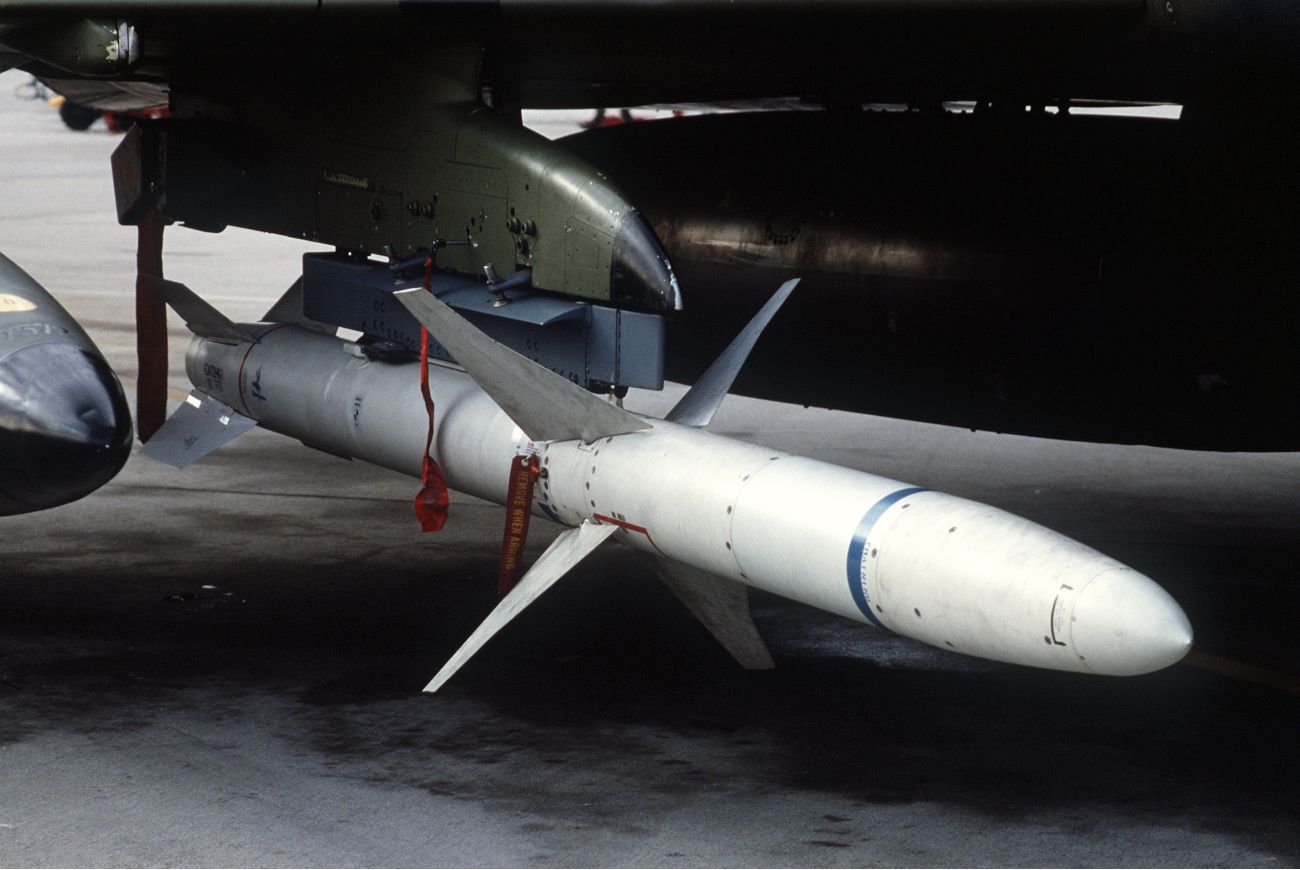According to this Russian Telegram channel, Ukraine struck Russia’s Belgorod region with HARM missiles last night. It’s claimed all the missiles were brought down. Citizens have posted photographs of the wreckage with markings indicative of HARM.
Russia Hits Critical Ukrainian Infra Crippling Thermal & Electricity Grids; Is It Barbaric Or Quintessential Modern Warfare?
China’s J-20 Fighter Flies With Trio Of Stealthy GJ-11 ‘Wingmen’ Combat UAVs – CCTV Graphic Sets Internet Ablaze
The AGM-88 HARM anti-radiation missiles (ARM), which the US plugged into Ukraine as a game-changing weapon system, hasn’t been a stellar performer, going by the frequency with which RuMoD claims to be downing the missile. The missile’s use against civilian targets would corroborate that assessment.
HARM was built for carriage by NATO aircraft. Ukraine modified its MiG-29 fighters with US help to carry and launch HARMs.
Operational Shortcomings?
For many months now, using HARMs, Ukraine has been attempting to degrade Russian AD systems around the Antonovsky bridge in the Kherson oblast, a vital supply route for Russian forces deployed in the Kherson bridgehead.
Ukraine has been launching coordinated attacks using HARMs & HIMARS. HARMs to take out Russian AD systems and HIMARS to blow holes into the Antonovsky bridge. The bridge, however, still stands, albeit with substantive damage. HIMARS and HARM have not accomplished what was considered a trivial task.
HARM Losses
Russian air defenses, somewhat ironically, have been routinely shooting down HIMARS rockets and HARM missiles. Some HARM missiles have inevitably slipped through; what they hit with their 68-kilogram warhead is anyone’s guess because Russian air defense systems in the proximity of the bridge are still launching away.
The inability of the US “game-changing system” to change the game could be attributed to problems with improvisation that went into launching HARM from the Ukrainian MiG-29 platform. But there is certainly more to it.

A good system doesn’t change the game, astute warfighters change the game using a good system! And astute warfighters are on both sides! Good tactics can often neutralize the advantage accruing to an adversary from a good weapon system.
Russian soldiers manning AD units near the Antonovsky bridge are likely well-trained and disciplined. They follow Standard Operating Procedures (SOPs) in the face of a HARM threat.
Countering ARMs
Just what are these SOPs?
Simple! Switch off your radar! That is all you have to do. Remember, it’s an anti-radiation missile. No radiation, no HARM!
But then, how do you defend the target? If you switch off the radar, you cannot guide a missile! Adversary fighters can strike you at will.
Not that simple!
Russian medium-range AD missile systems can be equipped with a fallback passive tracking system. For example, the Buk-M1-2 can be fitted with a combined optical tracking system with a thermal camera and a laser range finder for passive target tracking.
Typically, if a Ukrainian MiG-29 armed with HARMs attempted to attack the Buk-M1-2, it would switch off its radar, switch to its passive tracking system and start relaying tracking data from its passive tracking system to a supporting short-range AD system such as the Tor-M2. The sequence of actions might appear complicated, but it would not involve anything more than flipping a switch.
Using data streaming from the Buk, Tor would engage the attacking aircraft and/or the HARM. Yes, the Tor-M2 can waste an air-to-ground missile, besides aircraft, cruise missiles, and drones.
As an aside, the IAF Pechora (S125) missile system, acquired many decades ago from the Soviet Union but still in service and a predecessor to the current Russian AD mainstay Buk-M1-2, has a very capable optical system for engaging fighters in the presence of adversary jamming or ARM threat.
Misuse Of HARM?
The HARM can do little harm (pun not intended!) to a military target defended by a Buk-M1-2 missile battery manned by well-trained & disciplined soldiers.
But HARM can wreak havoc when launched at poorly defended civil targets behind the line of contact. The missile can home into practically any radar system, not just the Buk-M1-2.
If Ukraine is indeed attacking civilian targets using HARM, two things become evident.
Ukraine would not be wasting HARMs against civil targets if the missile was very effective against military targets. Attacking military targets wins wars; attacking civil targets, opprobrium! More dangerously, it would signal Ukraine’s determination to attack civil infrastructure targets across Russian red lines.
- Vijainder K Thakur is a retired IAF Jaguar pilot. He is also an author, software architect, entrepreneur, and military analyst. VIEWS PERSONAL
- Reach out to the author at vkthakur (at) gmail.com
- Follow EurAsian Times on Google News